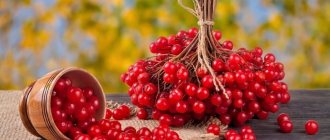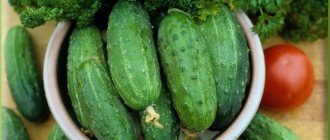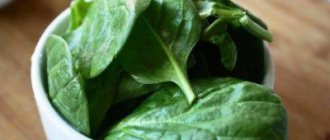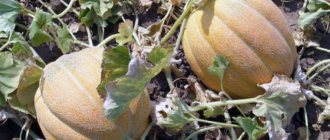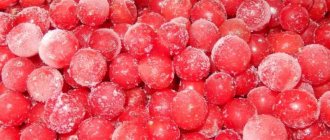There are several ways to prepare pears for winter storage. They are entirely preserved in 3-liter jars, dried, smoked, and prepared in the form of jam, preserves, and juice. In winter, such products will be eaten, and consumers will receive a pleasant taste sensation from it. But the benefits of such pears compared to fresh fruits will be minimal. Either their tasty juice will disappear from the fruit tissues, or the amount of useful elements will decrease. How to keep pears fresh for the winter at home?
Fresh pears are rich not only in natural water (their pulp contains about 85% liquid), but also in organic amino acids, vitamins, proteins, carbohydrates, vegetable proteins, and minerals. In order for all these elements to enter the human body without losing their beneficial qualities, it is necessary to preserve the fruit in the form in which they were removed from the branches of the tree. In addition, in cold winter it will be pleasant to feel their fresh taste and hear the fruity aroma, reminiscent of the warm autumn sun.
Which dryer for vegetables and fruits is better?
When to collect
In order to remove fruits from a pear tree that will not lose their consumer qualities during storage, it is necessary to take into account their biological characteristics. Their preservation is affected by their degree of maturity at harvest. In winter, the pear will remain juicy and tasty if it is collected in a timely manner, at a time when the fruit is at a certain stage of ripeness.
Pears are able to ripen during storage. This happens if they are collected immature, but have already accumulated a sufficient level of nutrients. During this period, they are able to absorb oxygen and carbon dioxide from the air without being tied to the mother plant, and carry out metabolic and hydrolytic processes. Chief among these processes is the ability to convert starch into sugar.
How to properly select fruits for harvesting and deal with packaging?
The fruit harvesting procedure begins with the selection of fruits. The following points need to be taken into account in this process:
- Pears that are not quite ripe are best suited for winter storage. They will reach the desired condition already during storage, which will significantly delay the time of fruit spoilage.
- Preference is given to specimens without signs of deterioration or damage. Only initially dense, dry, whole pears can be preserved for a long time at home.
- The crop must be harvested in dry weather. If this process is delayed and the fruits survive serious frosts around -15ºC, then they will no longer be preserved fresh, even winter varieties.
Particular attention should be paid to the containers in which the pears will be kept in the winter:
- The best option would be a pre-cleaned and fumigated wooden box. Plastic boxes and baskets are not able to provide fruit with similar conditions.
- It is necessary to ensure that there are air holes in the container. In an airtight container, the fruits will quickly rot. We line the bottom and sides of the box with paper.
- Regardless of where the pears will be stored, in the basement or at home, you need to choose large containers. There should be enough space to place the fruit with the stem facing up without them touching each other.
- You should not use boxes that are too high; the fruits can be laid out in no more than two layers, separating them with sheets of paper, straw or sawdust.
- You cannot store different types of food in the same container.
Professional gardeners prefer to store pears in a special refrigerator with racks. In this case, it would be correct to lay the fruits on paper in one layer, with the stalk facing up.
Collection time
The timing of harvesting for subsequent storage is influenced not only by the degree of ripening, but also by the climatic and weather conditions of the growing region. To maximize the shelf life of pears, they are harvested in warm, dry weather. Depending on the variety, harvest maturity occurs at different times. There are different winter, autumn and summer varieties of fruits.
Melon: health benefits and harms
When to collect summer
In summer varieties, the timing of the onset of the consumer and harvest phases of ripening almost coincides. They are removed from the branches 3-5 days before the onset of the consumer phase, in order to have time to prepare for processing, transportation, and sale. Early picked pears are not suitable for long-term storage. Shelf life ranges from 10-15 days to 1-2 months. Summer varieties, such as Lada, Cathedral, Rumyannaya Kedrina, Detskaya, Summer Duchess, Morning Freshness, July Rannyaya, Moldovskaya Rannyaya are ready for eating from mid-July to the end of August.
When can you take autumn photos?
Fall pears that are picked at the ripe stage will become edible after an average shelf life. If they are kept in normal apartment conditions at an air temperature of 18 ° C to 22 ° C, they will be usable 2-3 weeks after harvesting.
In the conditions of a fruit storage or vegetable chamber of a refrigerator, the consumer phase of maturity for autumn varieties will occur only after 2-3 months. Harvesting of autumn varieties begins in mid-September. By the end of autumn, you will be able to feast on Bere Moskovskaya, Krasnobokaya, Pamyati Yakovlev, Moskvichka, and Mramornaya pears.
When to harvest late varieties
Winter pears are harvested before the onset of cold weather so that they cannot be damaged by early frosts. They are usually in the removable maturity phase at this time. The speed at which they reach consumer maturity will depend on storage conditions. Some varieties of winter pears can ripen within six months and remain suitable for consumption until spring.
Winter varieties come in three types depending on shelf life. Noyabrskaya, Nart, Kyure, Elena ripen earlier than all winter varieties and will be suitable for eating in January. Saratovka, Pass-Crassan, Kyrgyz winter, Olivier de Serre pears are stored until the onset of the spring season. In May it will be possible to eat fruits of the varieties Dekanka Zimnaya, Izyuminka Kryma, Tikhonovka, and Maria.
Pear varieties suitable for long-term storage
Obviously, not all varieties of pears are suitable for storage.
Note! Naturally, summer varieties of pears are completely unsuitable for long-term storage: they are too soft and juicy, which is why they will begin to rot within a few days after you remove them from the tree.
Another thing is late or winter varieties: they are ideal for long winter storage, it’s not for nothing that they are called that.
The most popular late winter pear varieties:
- autumn (Marble, Yakovleva's Lyubimitsa, Talgarskaya beauty);
- autumn-winter (Bere-Bosk, Naryadnaya Efimova);
- winter varieties (Pervomayskaya, Charles Cognier, Parizhanka, Noyabrskaya).
Interesting! As a rule, autumn-winter and winter varieties have a tart taste, and the fruits themselves are covered with a waxy = protective coating. In general, astringency indicates the presence of tannins, which help fruits resist rot and mold, and increase the likelihood of fruit preservation.
Collection time for subsequent processing
For canning, cooking jams, confitures, preserves, squeezing juice, and making wine, pears are removed at the stage of technical ripeness. At this time, the fruit is easily separated from the stalk, filled with juice, but still has a fairly elastic, sweetish-tasting pulp that retains its shape well. Summer and autumn varieties are suitable for processing. Harvesting starts in mid-summer and ends in mid-autumn.
Pitless apricot jam: a recipe for the winter
What you should know
By carefully studying the nuances of proper preservation of ripe fruits, you can significantly extend the shelf life of the fruits and achieve maximum harvest maturity.
Pear varieties for long-term storage
Only some crop varieties can be preserved for a long time in winter. Experts identify the groups most suitable for this.
Autumn varieties
The most famous varieties of pears for autumn ripening:
- Marble. The culture is widespread in the middle zone. The fruits are large in size, have a dense skin that prevents the pears from rotting, a delicate taste and a sweet pulp with a grainy structure. The tree develops well even in low temperature conditions.
- Yakovlev's favorite. The fruits of this variety are distinguished by their juiciness and fleshiness, due to which they are harvested even at the stage of technical maturity. Pears with a sweet and sour flavor. Due to the rich content of fruit acids in the composition, fruits have a long shelf life.
The ripening time for this group of varieties occurs in early or mid-autumn. During this period, the crop is harvested and prepared for storage.
Autumn-winter varieties
These include varieties whose ripening period begins in the second half of autumn:
- Bere Bosk. The variety tolerates high humidity and cold climates well, so harvesting can be carried out even at the first frost. The fruits have increased resistance to all kinds of diseases.
- Elegant Efimova. This variety can be preserved in winter only if the fruits were collected at the stage of technical maturity. Otherwise, the fruit becomes watery and soon rots.
Autumn-winter ripening varieties are characterized by excellent taste properties and a tart aftertaste.
Winter varieties
Winter ripening pears are also divided into three subspecies depending on storage time: early winter, winter and late winter. Such fruits were bred by breeders specifically to be preserved in winter, and therefore are distinguished by a high level of frost resistance.
The main varieties are:
- Pervomayskaya. Its fruits are covered with a waxy coating, which protects the pears from freezing, pests, diseases, and also extends the shelf life of ripe fruits to 7 months.
- Charles Cognier. This variety easily tolerates temperatures down to -10 °C and has a sweet taste with a hint of chocolate.
Optimum temperature for long-term storage of fruit
When storing fruits in the right conditions, the average temperature is +1 – +3 oC, and the air humidity level is 85-90%. In the room itself, it is necessary to ensure constant ventilation or regular airing. Sudden changes in temperature are undesirable: this can cause rotting of the fruit.
Factors influencing timing
The duration of pear storage is influenced by the following factors: fruit variety, harvest time, degree of ripeness, compliance with a number of indoor conditions: temperature, air humidity, ventilation . Unlike other fruits, pears are more difficult to store due to the special consistency of the pulp, which begins to darken over time. If sufficient conditions are not met, the fruits become completely tasteless or completely spoiled.
See also
Description of the Packham pear variety and the subtleties of cultivation
Read
Diseases of pears during storage
If the crop was harvested at the wrong time and stored in the wrong conditions, all sorts of pear diseases can develop. Often, infection begins on site and appears during fruit storage.
Diseases can be either bacteriological (rot) or physiological (tan, wet burn, browning of the core).
It is extremely important to regularly monitor the safety of the crop: the first check is after 10-15 days, subsequent checks are once a month.
Damaged copies must be disposed of.
What crops are pears allowed to be stored with?
Pears are classified as fruits containing large amounts of ethylene, a gas that accelerates the ripening of fruits. In this regard, it is possible to provoke premature spoilage of products that are stored nearby. Therefore, it is important to consider product compatibility rules.
Pears are not recommended to be stored together with potatoes, since fruits can speed up the germination of tubers. In addition, the fruits themselves tend to absorb the taste of starch. You should not store them next to cabbage, celery and carrots. At the same time, there is a good proximity to plums, apples and peaches.
Apples
Pears and apples can be stored together, but it is important to regularly inspect the fruits, selecting spoiled and darkened specimens. If condensation has formed on the walls of the container where fruit is stored, it must be removed using a gauze cloth.
Grape
You can also store grapes in the refrigerator with pears, but it is recommended to distribute the fruit in paper bags. Such a neighborhood can be maintained for no more than 1-2 weeks.
How to store pears so they ripen
Fruits for further ripening are collected at the stage of technical maturity, when the greenish tint on their surface gradually gives way to a light blush.
If the pears are at an early stage of ripening, you need to do the following:
- Place the fruit in a room at a temperature of 18 to 20 oC.
- Let them sit for 1 to 5 days, focusing on the speed of ripening.
- Monitor the condition of the fruit 2 times a day.
- Move ripe specimens to a cool place where the temperature does not exceed 5 °C.
There are several methods to speed up the ripening of pears:
- Let unripe specimens lie in a cool place: then they will ripen much faster at room temperature. The best place is the refrigerator: the fruits should be left there for a day, after which you should proceed according to the scheme described above.
- Unripe pears should be placed in the same package with apples, bananas or any other fruit with a similar composition. Bananas and apples are capable of releasing ethylene, a catalyst that significantly speeds up ripening.
How to shoot correctly
Any fruit intended for long-term storage is collected in such a way as not to disturb the waxy coating on the surface skin and to prevent mechanical damage. Gardeners have developed a special technology for removing pears from tree branches. The fruits are eaten in calm, warm weather; there should be no droplets of moisture on the surface of the leaves and fruits. Cloth gloves are put on your hands.
Work begins from the bottom of the tree, gradually rising from the lower branches to the upper ones. The pear is grasped with the entire palm so that there is no pressure on individual points of the fruit. After this, using your fingers, separate the petiole of the fruit from the tree branch. Fruits at the stage of removable ripeness are easily separated from the branch. They do not need to be pulled off or rotated around the axis so as not to damage the tree branch.
How long can apples and pears be stored?
Winter apples and pears are stored for 3 to 8 months, and, as a rule, pears spoil faster. The keeping quality of fruits depends not only on the variety, but also on growing conditions, primarily on temperature and humidity during the growing season.
Thus, fruits that ripen in moderately warm weather without sudden temperature changes are stored longer. Excessively hot weather speeds up ripening, but at the same time shortens the shelf life of apples and pears.
Fruits that ripened during periods of prolonged rains are stored for about 2 months less than those grown in favorable weather conditions. Lack of heat, light and excess moisture reduce the resistance of apples and pears to mechanical damage and disease infection.
How to remove from a tall tree
Fruit harvests are harvested from tall trees by climbing onto a folding stepladder of the required height or using special fruit pickers attached to a long handle. They can be purchased at gardening stores, or you can make them yourself from plastic bottles. During harvesting, pears are placed in baskets, perforated plastic, wooden boxes with smooth walls, at the bottom of which there is soft paper or small shavings.
How to treat currants in the fall against pests and diseases
How to prepare apples and pears for winter storage
The first step is to know when to remove apples and pears for storage. The fruits of winter varieties are usually harvested in September, but you need to focus not on time, but on the ripeness of the fruit.
Pears are picked slightly unripe, so that when stored for storage they are still hard, but have already acquired the color characteristic of the variety. The apples should also be firm. Fruits that have already fallen from the tree are not suitable for storage: firstly, they are overripe, and secondly, they are damaged. Even a small scratch will lead to rapid spoilage of the fruit.
Apples and pears are removed from the tree along with the stem
In order not to destroy a large harvest of apples and pears, it is best to harvest the fruits in dry weather, when the dew has already dried. If fruits are frozen during overnight frosts, they are collected after thawing, but frozen fruits are not stored for a long time and are used for processing. Don't know what to do with your apple and pear harvest? Prepare apple juice, homemade cider, apple jam, bright and tasty pear jam.
Apples and pears carefully removed from the tree are sorted. Whole medium-sized fruits are selected for storage. To protect them from pests, a small piece of cotton cloth is moistened with glycerin and wiped over the fruit.
Processed fruits must be washed thoroughly before eating.
Collected fruits cannot be immediately sent for storage in a cold cellar with a temperature of 1-2°C. After sharp cooling, they will become covered with condensation, and wet fruits will easily begin to rot. Therefore, before storing in the cellar, apples and pears are placed for some time in a cooler room than the room in the house, so that the temperature difference is not so contrasting.
How to store
Before placing pears in storage containers, they are carefully inspected. The fruit must have a stalk, the skin of the fruit must remain intact. Fruits with mechanical damage or traces of insects are sent for processing. Pears at home can be stored in the vegetable department of the refrigerator, in cool conditions in the pantry, in a cold cellar or basement.
If a technical room with shelving is selected for storage, it is pre-prepared - the walls, ceiling, flooring are disinfected, and the shelves of the shelving are treated. The required temperature regime is created in the room (from +1 °C to +4 °C), air humidity is maintained within 80-90%. At low humidity, fruits will begin to lose moisture at an accelerated pace. The room must be ventilated.
How to keep it fresh for a long time
Whole, well-preserved pears are placed in boxes in a vertical position. The stalks should remain at the top of the fruit. The pears are placed on the bases of the fruits; the dried petals of the inflorescences are left on them in a residual form. Containers without lids for storage must be dry, clean, and have small ventilation holes in the walls.
The method of laying pears in boxes depends on the height of the side walls. If the walls allow them to be placed in two rows, then the layers are sprinkled with dry straw or shavings. If fruits are stored at home not in boxes, but in bulk on racks, then they are also placed with their tails up, and straw or shavings are scattered between the fruits.
How else can you preserve the harvest?
You can store pears on the balcony or in the basement. A dark, unheated but frost-free room in a residential building, for example, a pantry or closet, is also suitable. The optimal temperature for storage is from 0 to 1 °C. Before storing fruit, the room should be disinfected: put hot coals or sulfur and close the doors tightly. After 2-3 days the procedure can be completed. Fruit should not be stored in rooms where there is mold or mildew on the walls. If the humidity level in the room is exceeded, then place a container with slaked lime in it. It will help eliminate excess moisture.
In the refrigerator, pears are stored in plastic bags. They must have holes in them. They are packaged in 1–1.5 kg. Periodically check whether there are any rotten ones. If the fruit shows signs of rotting, then the bag with the entire filling is thrown away.
How to store in the refrigerator
For relatively short-term storage, unripe autumn pears are placed in the vegetable section of the refrigerator, which will then ripen within 2-3 months. Early ripening varieties are stored in the freezer. They are picked from the tree at the stage of consumer maturity, separated from the stalks, washed, dried, cut into slices, and cleared of seeds.
Then the pear parts are placed on a shelf with a low “shock” freezing temperature. Freezing time under such conditions is about 2 hours. Then the frozen pieces are placed in bags or plastic containers with lids and sent to a regular freezer. It will take a long time to defrost for eating raw. Defrosting is carried out on a regular refrigerator shelf. To prepare compotes, pear pieces are not defrosted.
How to treat a greenhouse in the fall after harvesting
Simple ways to process pears at home
Experienced chefs know many different options for preparing these fragrant fruits for the winter. Some people dry them, others like dried fruits from pears, and some canned them, pickled them, made jam or jam. In addition, the fruit goes wonderfully with the following products:
- berries;
- grape;
- citruses;
- Rowan;
- ginger;
- carnation;
- cardamom.
One way to process pears at home is to make delicious jam. To do this, take the following ingredients:
- ripe pears (2 kg);
- sugar (1 cup);
- lemon (half);
- water.
First prepare sugar syrup in a deep container. Then sliced pears and lemon slices along with the peel are placed there. When the mixture boils, remove it from the heat and cover with a clean towel. After a day, the jam is brought to a boil again and set aside. This operation is performed 4 or 6 times, depending on the desired result.
Recently, it has become fashionable to store summer fruits in the freezer in order to later serve them as a fragrant dessert. Is it possible to freeze pears for the winter without losing the nutrients of the fruit? Practice shows that this is a worthwhile endeavor. After all, this way you can save precious time, which is always in short supply.
Sufficiently ripe, medium-sized fruits are selected for freezing. They should have dense flesh. First, the pears are washed, then cut, cored and dried on paper towels. Then the pieces are placed on a cutting board and placed in the freezer. When they harden, place them in plastic bags and store them at -18°C. The product is used for making compotes and as a flavorful filling for pies or cakes. There is nothing tastier than natural products when there is snow outside and a cold wind is blowing.
How to store for the winter
Constant optimal storage conditions, a clean, ventilated dark room, the absence of other types of vegetables and fruits nearby - these are the conditions that are necessary for the long-term preservation of pears in the winter. Only those fruits that meet the requirements for the removable ripeness phase will be stored for a long time. Fruits should not have soft flesh, a strong aroma, or the color of the skin of a ripe fruit. Only unripe pears can be stored for a long time.
How to store in the cellar for the winter
There are some other requirements for a clean, disinfected cellar room in which boxes of unripe pears are planned to be stored. The main thing is that the cellar should not be very damp or dry (optimal air humidity is 85%) and warm (required temperature from 0°C to + 4°C). It should have ventilation and a separate compartment for placing pears. It should not be penetrated by insects and rodents that spend the winter in the underground.
Benefits of fruit
Pear is one of the healthiest delicacies. With a low calorie and sugar content, pears have a huge supply of nutrients and vitamins . This fruit surpasses even blackcurrants in vitamin C content.
Folic acid, which is contained in pears, is very useful for pregnant women and young children . The potassium content in this fruit is extremely high, so pear fruit has a beneficial effect on the functioning of the heart muscle .
Eating two fresh pears on an empty stomach will relieve heartburn and eliminate intestinal discomfort. This is why eating this fruit fresh is so important. How to store pears at home?
Reviews
The most powerful source of ethylene in vegetable stores is bananas. It is better not to store anything near them. Berries are well stored with fruit. Cherries and blueberries do not themselves deteriorate their qualities under the influence of ethylene, nor do they affect other types of fruits.
Sergey
The most delicious and high-yielding winter varieties of pears are Dekanka Krasnokutskaya and Parizhnka. The trees of these pears are not very tall, making them easy to care for and collect fruits. Their fruits can be stored in a cold basement until February.
Marina
Some gardeners do not like to grow pears; they are considered to require more complex care than apple trees. In addition, not everyone is able to store these fruits for a long time. But this opinion is unfair. If you collect the fruits on time and create optimal storage conditions, you will be able to enjoy pears for a long time and with pleasure.
Health to you and your loved ones! Natalya Belokopytova.
Correct selection
You should choose fruits for preparations carefully. In winter, it is best to store slightly unripe fruits. They will reach the required condition during storage and will remain unspoiled longer. They remove fruits from trees carefully, without putting pressure on them. The pear is grasped with your fingers, light pressure is applied to the stalk, the fruit is lifted and separated from the branch. Trees cannot be shaken.
The following varieties are distinguished:
- The early ripening variety is harvested from early to mid-July. Smallish sweet fruits cannot be stored fresh for a long time. It is better to process them into jam, compote or jam.
- Mid-season species are collected in August, from the middle to the end of the month. The pear is distinguished by its large shape and hard flesh. The fruit tastes juicy and sweet. Regardless of the method, they will be able to survive until the beginning of winter, no longer.
The most suitable for long-term storage is the late or winter type of pear.
Fruits must not be damaged or spoiled. Experts in growing fruit crops know how to store pears at home. The fruits should be firm, dry, without dents or bruises. The crop is harvested when the weather is dry. If harvesting is delayed, pears may fall into frost. If they survive the fifteen-degree cold, they cannot be left fresh for long.
Special containers are selected for storage in winter. Preference is given to a wooden box, which it is advisable to clean and fumigate before use. Conditions for baskets and boxes made of plastic are not so good.
Please note that an airtight container will allow the fruit to rot in a short time. The container should have holes to allow for slight air movement. A paper layer is applied near the bottom and walls of the box. The container chosen is volumetric. The pears do not touch each other and are laid out with the stalks facing up.
Pay attention to the height of the boxes. It is permissible to lay out only a couple of layers of pears separated by paper
You can use sawdust or straw to arrange the fruit. Not everyone knows how to store pears if they are of different varieties. The main rule is to put them in different containers. Professional gardeners store sweet fruits in special refrigerators with shelving. Place paper under a uniform layer of pears, with the stalks facing up.
Valuable recommendations
Before storing fruit for the winter, it is worth considering several important points that will extend the shelf life of delicious pears:
- The temperature should not exceed +5°C and fall below 0°C. Sharp jumps are also not advisable.
- The storage facility must be equipped with a good ventilation system.
- If the storage area is illuminated, you can avoid spoilage of the fruits by covering them with a cloth made of dark material that allows air to pass through well.
- It is advisable to plant the product no later than 3-5 days after harvesting, since the harvested fruits look good at first glance, but after a few days they may show the first signs of spoilage.
- Lay out fruits in no more than 3 levels, laying them diagonally. Place the stalks in the cavities between the fruits. Each layer of pears must be covered with paper and sprinkled with sand and sawdust.
- You should not keep pears with vegetables, which will give them an unpleasant taste and smell.
Don't forget to check the condition of the fruit. If you find spoiled fruit, remove it immediately to protect the remaining harvest.
Storing pears has many features unlike other fruits. In order to enjoy a healthy and nutritious product in winter, it is important to choose the right variety, collect the fruits and, in accordance with the recommendations, provide the crop with all the necessary conditions for long-term storage.
Storage methods
There are several common methods that help preserve the taste characteristics and beneficial properties of fruits for a long period.
Fridge
Before putting into the refrigerator, it is better to wrap each fruit in cling film or paper so that the fruits do not come into contact with each other. It is also better to store pears in plastic bags. Place the fruits in small portions so that their weight is less than 1 kilogram, and close, leaving a small space for air to enter.
Freezer
You can preserve pears for a long period by freezing them. In this condition, pears will last from 7 to 12 months. To do this, carry out the following steps:
- Select ripe fruits, wash them thoroughly and remove the core.
- Chop the fruit so that the thickness of the slices does not exceed 2 cm.
- Set the pieces aside on a towel until they are completely dry.
- Place in a food bag and place in the freezer for storage.
Important! To ensure that the pear retains its natural color, treat it with lemon juice.
See also
10 ways to quickly and easily fold a T-shirt without wrinkles
Cellar
Pears can be kept in a dark, cool room for a long time. To do this, you need to prepare wooden boxes and install them on shelves placed at a distance of 15-20 cm from the floor. In this case, treat the room in advance against fungi by whitewashing the walls with a lime solution. Pre-wrap each fruit in paper or place it between the fruits. You can also add sawdust. Use a piece of cotton fabric as a lid.
Basement
In the basement, it is recommended to carry out sanitary cleaning and preventive treatment of the room against mold and fungi. To do this, use a sulfur smoke bomb or paint the walls, ceiling and floor with lime. Before planting, the fruits must be carefully inspected and ensured that there are no rotting processes.
Damaged pears should not be thrown away immediately; it is better to eat them first.
Underground
This method involves digging a hole 50 cm deep and sending pears into it, previously placed in plastic bags with a small hole. Cover the top with spruce branches and force it with boards. The fruits can be stored until spring.
Sandboxes
The sand will help keep the fruit in a dry, cool and dark place, in such conditions the fruit will be able to lie until mid-winter and retain its taste.
Preparing fruits for long-term storage
Before sending pears for storage, they must be carefully inspected, so to speak, a selection must be made, namely, fruits must be found without any scratches, dents, rottenness or other damage (it is better to immediately discard any questionable specimens). Then sort by size, carefully placing the fruits in boxes.
Important!
One bad pear can end up ruining the entire batch.
Video: when and how best to harvest pears
Recycled storage
Fresh pears are suitable for consumption for a maximum of 7 months. To increase this period, fruits are processed : dried, frozen, canned or candied.
There are several drying methods:
- In the oven . The fruits are placed on a baking sheet and dried for 2 hours at +55…+60°C. Then the temperature is increased to +80°C, and after the pears are reduced in size, they are reduced to +55°C. The entire procedure takes 14–16 hours for slices and 18–24 hours for whole fruits.
- In an electric dryer . Thanks to uniform air circulation, the pears do not have to be turned over, and the presence of several pallets allows you to process up to several kg of fruit at the same time.
- In the microwave . At a power of 200 W, the pears are dried for 2-3 minutes. This is the fastest method, but due to the inability to accurately calculate the time, there is a risk of drying out or burning the fruit.
- On air . The pears are laid out on a surface (for example, baking sheets or trays) and placed in the sun, in a place where there is no dust or drafts. After 2 days, the fruits are transferred to a shaded place and left to dry for another 2-3 days.
Fresh fruits picked no more than 2 days ago are suitable for this treatment . Dried fruits are stored in airtight containers: glass jars with tight lids or zip-lock bags in a cool, dark place.
Before freezing, pears are washed, cut into 4 parts and cored . After this, the fruits are dipped in a lemon solution for 30 seconds (juice of 1 lemon per 2 cups of water), dried on paper napkins or towels, placed in bags or containers and put in the freezer. They are frozen at -30°C and stored at -18°C.
To prepare dried pears, cut them into slices , sprinkle with sugar and leave for 2-3 days. Drain the juice and dip the pieces into hot sugar syrup for 10 minutes. The slices are dried at +60°C in the oven for about 6 hours or in an electric dryer for 14 hours. In this form, fruits are stored in glass jars or paper bags at a temperature not exceeding +10°C and air humidity of 65–70%.
Pears can be preserved whole, pickled, used to make preserves, jams, compotes , juice or even wine. The preparations are stored in a cellar, pantry or on the balcony at a temperature not exceeding +5°C. Make sure that the containers are not exposed to direct sunlight.

